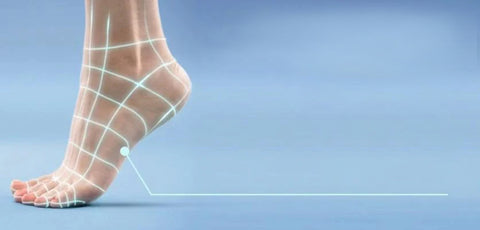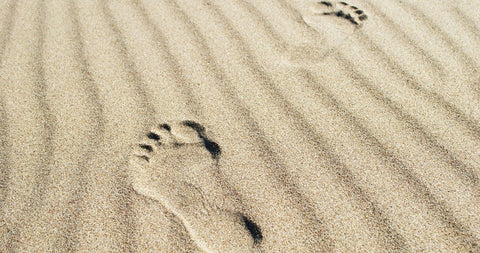
Flat feet and high arches
It’s no surprise that so many injuries are foot-related. The arches of the feet are highly specialised and are primarily responsible for the transmission of load and absorption of shock every time we take a step. When walking, the stresses placed on your feet are greater than your resting body weight, and this increases further when we run. If you have flat feet or high arches, you may be more likely to suffer from trouble after impact than people with normal-arched feet.
What are flat fleet and high arches?
Pronation is the inward movement of the foot as it rolls to distribute the force of impact on the ground as you walk or run. Those that overpronate will see their foot roll further inwards, causing the arch of the foot to flatten.
The opposite of pronation, ‘supination’ as it’s known – is when the foot rolls outwards when it comes into contact with the ground. When this happens, the force of the ground isn’t as evenly distributed, placing more stress on the other areas of foot. Supinators may have high arches which could become painful under pressure.
Both conditions can be associated with pain in the feet, ankles, lower legs, knees, hips or lower back.
What are the common causes of flat feet and arch pain?
Having flat feet and high arches are usually nothing to worry about, however some people can experience pain and associated problems. Pain can be caused by:
- Wearing unsupportive, badly fitted shoes.
- Overstretching and not getting enough rest.
- Walking style (over and underpronation).
- Wearing high-heels and narrow shoes.
- Playing a lot of high-impact sports that involve jumping and landing (such as ballet and basketball).
- Being overweight.
- Abnormalities of bones in feet.
- Wearing old or worn shoes that don’t cushion or support the arches or heels.
Are there any genetic or lifestyle factors that play a part in these conditions?
Flat feet usually occur in people who have arches never really develop or inherit structural abnormalities from their parents. However, they can sometimes be the result of:
- Feet bones not forming properly in the womb.
- Loose connective tissue throughout the body.
- Conditions such as cerebral palsy, spina bifida and muscular dystrophy which affect the muscles and nerves.
- Connective tissue in the foot becoming overstretched and inflamed because of factors like obesity, old age, overuse, poor footwear, injury and rheumatoid arthritis.
When should I seek medical attention?
You should consult your local healthcare professional if your feet are painful when wearing supportive, well-fitted shoes, your shoes wear out fast, your feet appear to be getting flatter or higher, or feel weak, numb or stiff. You should consult your doctor if you often get feet or ankle injuries, you have problems walking or balancing, it only affects 1 foot or if you didnt have unusual arches before.
Tips for protecting against and managing flat feet and high arch pain
You can help ease the discomfort of flat feet and high arches by:
- Wearing well-fitted, supportive shoes with low heels.
- Wearing tailor-made insoles inside your shoes to support your feet and prevent them from rolling inwards or outwards.
- Losing weight if you’re overweight.
- Gently stretching the muscles and connective tissues in your lower legs to lessen inward and outward rolling.
To explore related products, click here.
UK/SC/0319/0049l

